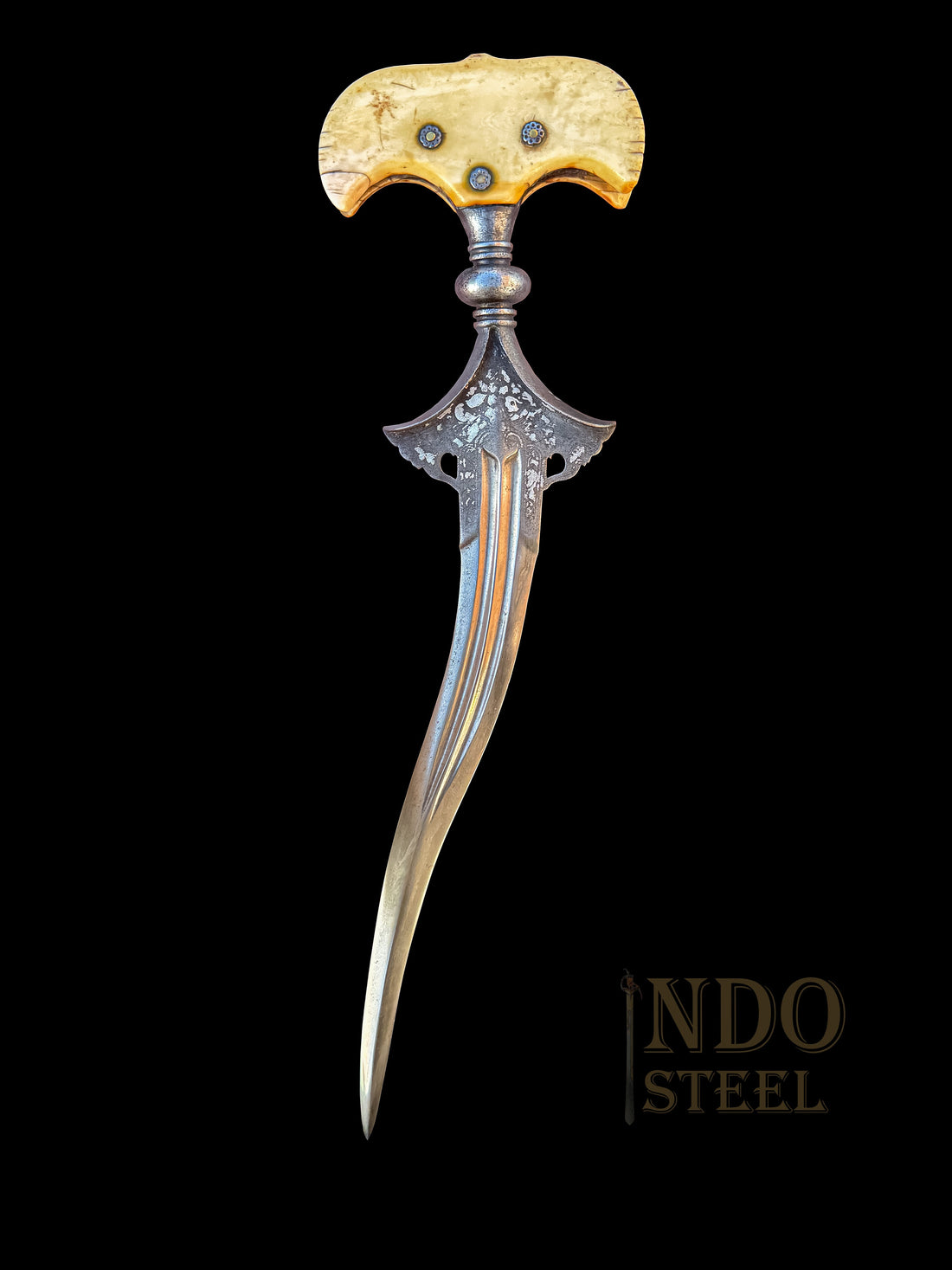
The Chilanum (चिलानम)





 The Chilanum (चिलानम) is renowned for both its skillful construction and combative efficacy. It’s earliest known examples are associated with the Vijayanagara Empire (1336–1646). Several medieval Deccan and Mughal documents, as well as the testimonies of European visitors to India during the 16th and 18th centuries, mention this weapon. Abu’l-Fazl, details the different weapons used in Mughal India in Ain-i-Akbari, the document chronicles the Mughal government, mentions a dagger as a khapwah. Western students of Indian arms and armour most frequently refer to this kind of dagger as a Chillanum.
The Chilanum (चिलानम) is renowned for both its skillful construction and combative efficacy. It’s earliest known examples are associated with the Vijayanagara Empire (1336–1646). Several medieval Deccan and Mughal documents, as well as the testimonies of European visitors to India during the 16th and 18th centuries, mention this weapon. Abu’l-Fazl, details the different weapons used in Mughal India in Ain-i-Akbari, the document chronicles the Mughal government, mentions a dagger as a khapwah. Western students of Indian arms and armour most frequently refer to this kind of dagger as a Chillanum.
The Chilanum dagger, with a curved or straight double-edged blade, is distinguished by its S-shaped hilt and elaborate guard, often made from bronze, silver, or gold. Museum catalogs, including those from the V&A, show surviving examples from the Bijapur Sultanate (16th–17th century) with finely chiseled hilts.
Warriors from the Deccan Sultanate, Rajputs, and Marathas were the main users of the Chilanum. A French traveler claims that elite guards and nobles frequently carried these daggers (Tavernier). Because of its lightweight design, the dagger was perfect for rapid thrusting motions, especially during duels or ambushes. Prinsep, J., also suggests that the chilanum was used in Deccan and Maratha warfare for quick, close-quarters combat. This Chilanum dagger boasts a gracefully curved wootz steel blade, enhanced with intricate silver koftgari decorations. The hilt is fitted with elephant ivory scales, secured by decorative floral pins, blending durability with refined artistry.
References
* Abu’l-Fazl. (1590). Ain-i-Akbari.
* Elgood,R. (2004). Hindu Arms and Ritual: Arms and Armour from India.
* V&A. (2021). South Asian Weapons Collection.
* Tavernier,J. (1676). Travels in India. Translated by V. Ball (1889).
* Prinsep,J. (1832). The Book of Indian Eras.
